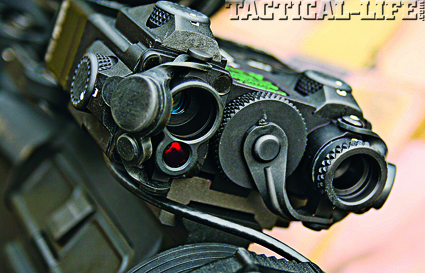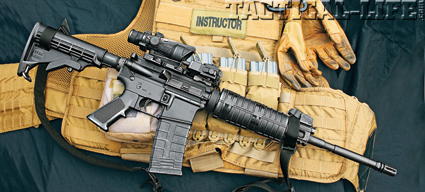Learning from its predecessors, the piston-driven Stag Arms Model 8 in 5.56mm proves itself to be durable and dependable in rugged situations with minimal maintenance.
The race is on to produce a gas-piston operated carbine durable enough to be adopted by the United States Military as standard issue. Of course once the military takes their pick, the LE community will likely follow suit. While the mission may differ, operator familiarity is essential when selecting a weapons platform no matter what the purpose. At the moment, every major manufacturer of the Stoner-based rifle either has a gas-piston version in the market or in development.
Each company producing piston guns has applied their own variation to the concept with differing levels of success. Many gun makers are experiencing growing pains as they discover previously unrealized issues with the piston systems.
Advertisement — Continue Reading Below
One of the first issues to surface was the replacement of the gas key on the bolt carrier. Original models simply swapped the gas key with a flat-faced surface for the operating rod to push against. As this component is not accustomed to be in pushed on, it often worked loose even after being torqued in place. The solution most manufacturers have taken is to machine dedicated bolt carriers for the piston guns made of a solid piece of steel. Now there are no screws to come loose.
 The DBAL-A2 from Laser Devices features variable settings, including momentary and constant “on,” and a “low” or “high” visible red and IR laser. A remote pressure switch is also included.
The DBAL-A2 from Laser Devices features variable settings, including momentary and constant “on,” and a “low” or “high” visible red and IR laser. A remote pressure switch is also included.
Next up on the issues list is carrier tilt. Rather than pushing straight back into the buffer tube, the original bolt carriers were tilting slightly under the top pressure of the operating rod. This was causing undue wear on both the bolt carrier itself and the buffer tube assembly. Depending on the manufacturer, the issue is being addressed or not.
Advertisement — Continue Reading Below
A third issue deals with the bar-rel nut. That is, the barrel nut cracking or breaking. Once there was only a steel tube passing through the top of the nut, there is now a reciprocating op rod. The motion from the op rod has caused some barrel nuts to crack and/or break. One of the solutions to this has been to install an op rod guide at the barrel nut.
























